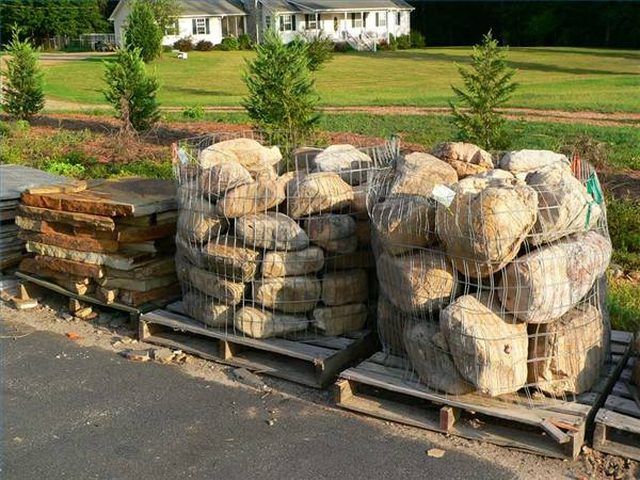Bulbs
Flower Basics
Flower Beds & Specialty Gardens
Flower Garden
Garden Furniture
Garden Gnomes
Garden Seeds
Garden Sheds
Garden Statues
Garden Tools & Supplies
Gardening Basics
Green & Organic
Groundcovers & Vines
Growing Annuals
Growing Basil
Growing Beans
Growing Berries
Growing Blueberries
Growing Cactus
Growing Corn
Growing Cotton
Growing Edibles
Growing Flowers
Growing Garlic
Growing Grapes
Growing Grass
Growing Herbs
Growing Jasmine
Growing Mint
Growing Mushrooms
Orchids
Growing Peanuts
Growing Perennials
Growing Plants
Growing Rosemary
Growing Roses
Growing Strawberries
Growing Sunflowers
Growing Thyme
Growing Tomatoes
Growing Tulips
Growing Vegetables
Herb Basics
Herb Garden
Indoor Growing
Landscaping Basics
Landscaping Patios
Landscaping Plants
Landscaping Shrubs
Landscaping Trees
Landscaping Walks & Pathways
Lawn Basics
Lawn Maintenance
Lawn Mowers
Lawn Ornaments
Lawn Planting
Lawn Tools
Outdoor Growing
Overall Landscape Planning
Pests, Weeds & Problems
Plant Basics
Rock Garden
Rose Garden
Shrubs
Soil
Specialty Gardens
Trees
Vegetable Garden
Yard Maintenance
Decorating With Landscaping Rocks
Decorating With Landscaping Rocks. Using landscaping rocks can add style, depth of field and character to any yard or garden. Because they come in so many different shapes, sizes and colors, landscaping rocks can be utilized in a wide variety of ways---from stepping stones, borders and garden paths to walls, benches and fire pits---all of which add...

Using landscaping rocks can add style, depth of field and character to any yard or garden. Because they come in so many different shapes, sizes and colors, landscaping rocks can be utilized in a wide variety of ways---from stepping stones, borders and garden paths to walls, benches and fire pits---all of which add dimension and texture to any outdoor area. They can also offer an affordable alternative to more extensive and costly landscaping projects.
Things You'll Need
Landscaping rocks
Heavy leather work gloves
Pick-up Truck
Wheelbarrow
Shovel
Hoe
Decide what you want to accomplish with your rock. Consider what type of rocks will produce the look and feel you desire and what combinations work best together. Does one style of rock match the style of your home and other plants and decorations better than another?
Find the right rocks. If you are lucky enough to live in a rural area, you can probably find some attractive and useful rocks for free---particularly if you want to build structures like a wall or fire pit. Nurseries, garden stores and home improvement outlets sell a wide variety of decorative stones---from pebbles and pavers to cobblestone and flagstone. Some interesting places to start looking for the perfect rocks are listed in the Resources section below.
Balance the placement of your rocks to reflect a feel of permanence---as if the rocks have been in place for years and not just haphazardly thrown on the ground. Do this by planning carefully where you want each rock to sit and what purpose you want it to serve. Avoid placing your stones at exactly measured distances, as this usually looks "forced" and unnatural. Place the stones in areas that add to the yard without looking like they are covering something up or begging for attention. Rocks are yard and garden accents, not features.
After you have your rocks in place, take time to bury each one 4 to 6 inches in the ground---burying the larger stones furthest down. After each rock is in place, simply pack the dirt back around its bottom and rearrange the ground cover as naturally as possible. This not only makes the stone look like a permanent fixture of the property, it adds a bit of mystery to it, because no one knows how large it actually is. If you are planning on building any stone structures, such as a retaining wall or a bench, be sure to lay the rocks with the flattest tops down first to allow easier stacking.
Building options are limitless when dealing with garden rocks, but the most common structures--retaining walls--are usually either fortified and mortared long-term walls (often over 4 feet in height) or smaller dry-stacked garden walls. Larger walls require the building of bottom support bases and concrete mortar between the rocks. Smaller dry-stack walls can also utilize a natural mortar--like common yard soil--to help solidify the structure and add a more permanent look. Large gaps between the rocks can easily be filled with the soil mortar, not only to reinforce the structure, but also to allow the planting of ground cover that will grow naturally from the wall. Tips on building walls can be found in the Resources section below.